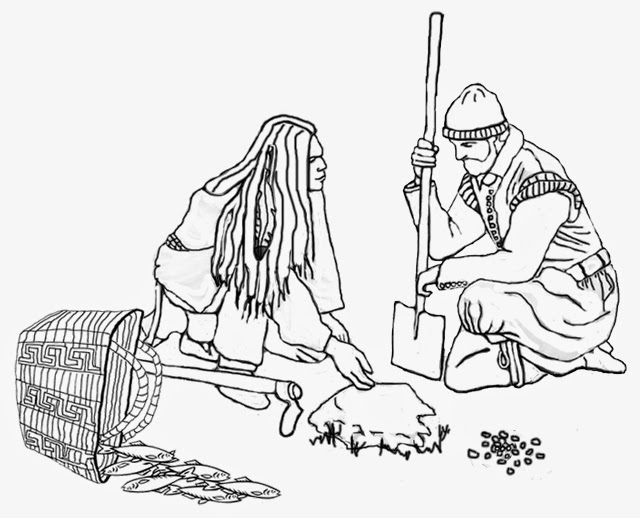Disclaimer - A lot of the detailed agronomy that I refer to in this post is way over my head. Ben is really the expert, and I try my best not to mess up the information. Please show grace if I made any mistakes, but do kindly point them out so I can be sure to correct it.
As a crop farmer, people always ask Ben what he does during the winter. He is always surprised that their tone implies they don't think he does much of anything. I'll be honest, crop farming makes for a much more relaxed winter than livestock/dairy farming. Really though, he goes from a double-time (or more) work schedule to a single-time work schedule. It's not like he sits around doing nothing for several months of the year.
The huge project this winter has been re-working their entire crop nutrient system. It's a pretty big overhaul from what they've always done. You know how people always tell young children that plants just need sun, soil and water to grow? Wrong. If only it were that simple. One really important thing is that plants need macro-nutrients and micro-nutrient, similar to us. Our protein, carbohydrates and fats (macro-nutrients) are nitrogen, phosphorus and potassium to plants. It's also called N-P-K. Who knows why...? Any hands up...? Correct, because those are their symbols on the periodic table of elements. Micro-nutrients for us would be all the various vitamins - basically just read the bottle of your preferred multi-vitamin and you can see all of them there. Plants also have a big list of micro-nutrients. (Little aside here - some agronomists think that micro-nutrients will be the next big breakthrough in taking crop yields to the next level.)
So crop nutrients are a VERY good thing. There are a lot of natural ways we can get these important nutrients into the soil. A big way is to allow as much of the crop "waste" to stay back on the field after harvest. The stem/stalk of the plant contains a lot of the nutrients, so they go back into the soil when it decomposes. (Note - this isn't always possible because some farms need to use it for bedding, etc.) Crop rotation helps this even more because certain crops can "fix" nitrogen from the air, so they are naturally creating the nutrient that is later added to the soil through decomposition. Reducing soil erosion is also important to preventing phosphorus to run off since it binds itself with soil.
Even with all this, it still really helps to give the crops a carefully measured amount of these nutrients at the best times. If you really pay attention during the summer, you can notice some fields of corn look yellow-ish if they are lacking nitrogen and then a week or so after the farmer applies some it turns a darker green.
This is the part that Ben and his dad re-worked all winter. About two years ago they started to sense they would benefit from changing their nutrient management process. So they actively researched methods for applying these nutrients - wet, dry, in fall after harvest, at planting time, right after planting. They based their decision on what seemed like it would be the best for the plant. Then they identified all the equipment they would need to get/change to accommodate the new process. Rather than spend a huge amount of money buying the equipment that is meant for this process, they decided to use what they currently have and modify it. I won't go into detail, but suffice it to say that it was a very big undertaking to design and fabricate everything.
After months worth of working on it, last week was the day of reckoning with the new equipment. The weather and soil temperature was all right for getting seeds in the ground. All those hours, days, weeks and months of creating it, and then at the step of testing it there's a urgency that it needs to work. And it did! Just a day of calibrating and some very minor adjustments, and they were "full speed ahead" (which is like 4.5 mph for planting corn!).
Now we wait half a year to see what the final result will be. Lots of patience and prayer!

No comments:
Post a Comment